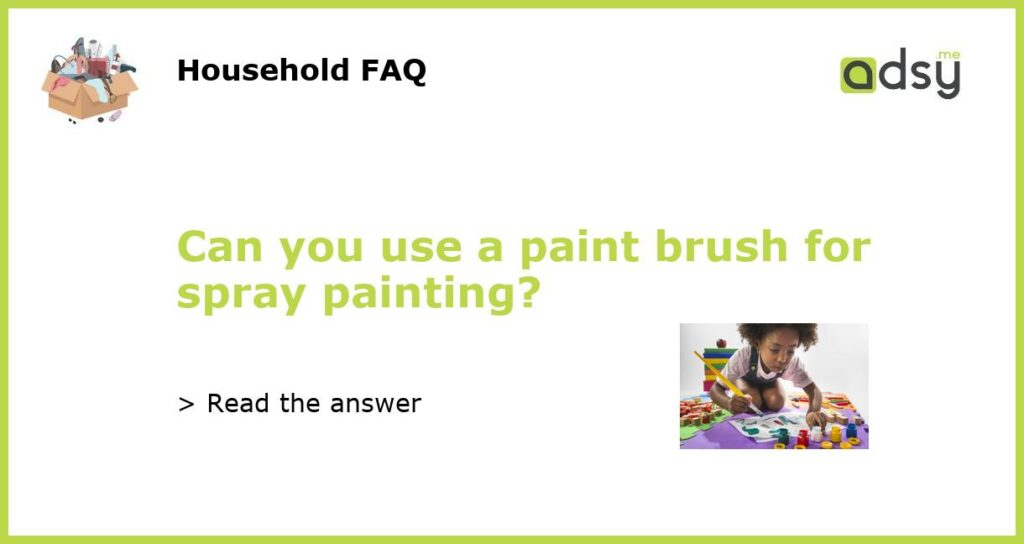Yes, you can use a paint brush for spray painting
Spray painting is a popular method of applying paint to surfaces quickly and evenly. It is commonly used in automotive, industrial, and artistic applications. While spray guns are the most common tool for spray painting, it is possible to achieve similar results using a paint brush. Using a paint brush for spray painting can offer greater control and precision, and it is a viable option for certain projects.
Advantages of using a paint brush for spray painting
Using a paint brush for spray painting offers several advantages. Firstly, it allows for greater control over the painting process. With a paint brush, you can easily adjust the amount of paint being applied, creating more precise and detailed results. Additionally, a paint brush allows for easy touch-ups and corrections, as you can simply go back and paint over any mistakes or areas that require additional coverage.
Furthermore, using a paint brush for spray painting eliminates the need for a spray gun, which can be expensive to purchase or rent. For small-scale projects or those that require multiple colors or fine details, using a paint brush can be a cost-effective alternative.
Techniques for using a paint brush for spray painting
When using a paint brush for spray painting, there are a few techniques that can help achieve the best results. Firstly, it is important to select the right type of brush for the job. A high-quality, synthetic bristle brush is generally recommended for spray painting, as it offers good paint loading and release.
Next, it is important to properly prepare the surface before painting. This includes cleaning the surface, removing any loose or peeling paint, and applying a primer if necessary. Once the surface is properly prepped, you can begin the spray painting process.
When using a paint brush for spray painting, it is important to thin the paint to achieve the right consistency for spraying. This can be done by adding a small amount of water or paint thinner to the paint. It is important to follow the manufacturer’s instructions for thinning the paint, as different types and brands of paint may require different ratios.
When applying the paint with a brush, it is important to use long, smooth strokes to avoid streaks or brush marks. It can also be helpful to apply multiple thin coats, allowing each coat to dry completely before applying the next. This will help achieve a smooth and even finish.
Limitations of using a paint brush for spray painting
While using a paint brush for spray painting can offer greater control and precision, it does have some limitations. One limitation is the amount of paint that can be applied at once. With a spray gun, a large amount of paint can be applied in a short period of time. With a brush, the amount of paint that can be applied is limited by the size of the brush and the amount of paint it can hold.
Additionally, using a paint brush for spray painting can be more time-consuming than using a spray gun. The process of dip and brush can take longer than simply spraying the paint onto the surface. This can be a disadvantage for larger-scale projects or when time is a critical factor.
While spray guns are the most common tool for spray painting, using a paint brush is a viable alternative that offers greater control and precision. Using a paint brush for spray painting can be advantageous for projects that require a high level of detail or for touch-ups and corrections. By following the proper techniques and using the right type of brush, it is possible to achieve professional-looking results with a paint brush. However, it is important to consider the limitations of using a paint brush for spray painting, such as the amount of paint that can be applied and the time it may take. Ultimately, the choice between a paint brush and a spray gun for spray painting will depend on the specific project and desired outcome.






